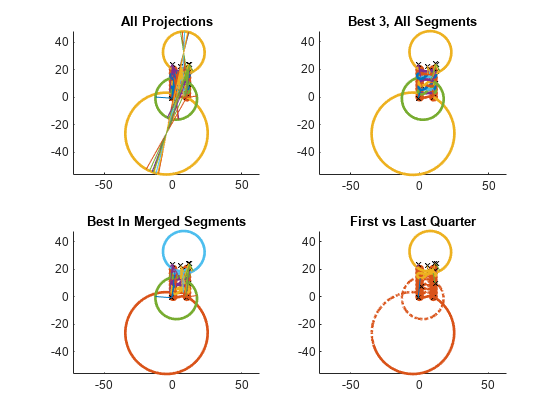closestProjections
Find orthogonal projections between path tangent vector and query point
Since R2022a
Syntax
Description
[
attempts to project each xy point in the points
matrix, onto each clothoid segment contained in the reference path,
arclengths,distances] = closestProjections(refPath,points)refPath, such that the projection vector is orthogonal to the path
tangent-angle. Returns closest orthogonal projection between the curve and query point in
each segment as a pair of two cell arrays, arclengths and
distances containing the arclengths and distances
respectively.
[___,
optionally returns the projected points, projPoints] = closestProjections(refPath,points)projPoints as a cell array
containing path data evaluated at the corresponding arclengths element.
Examples
Input Arguments
Output Arguments
Extended Capabilities
Version History
Introduced in R2022a
